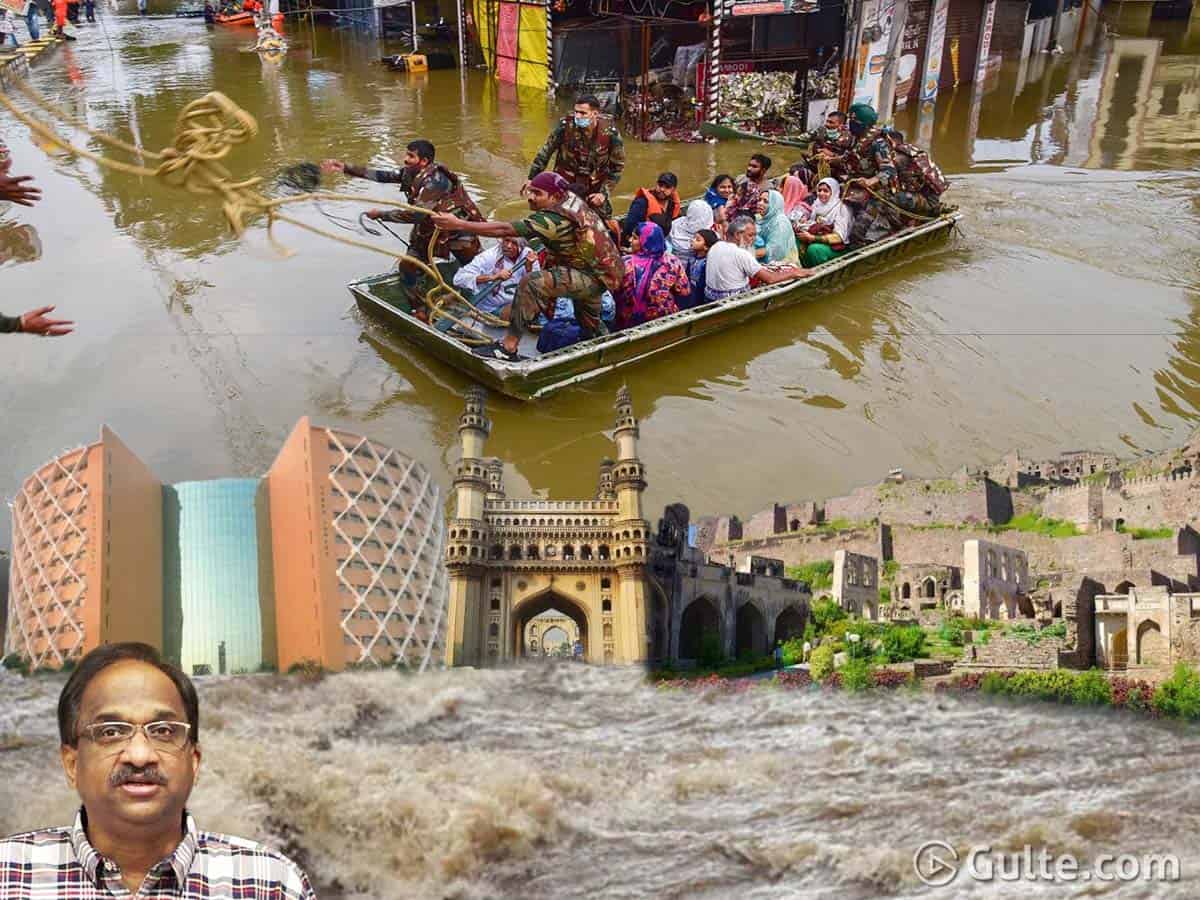Political blame game has begun with Hyderabad continuing to face flood induced crisis. But, the fact is that unplanned growth of city due to haphazard urbanization over the decades is responsible for this pathetic plight. Hyderabad witnessed floods at least five times in the last two decades. The development paradigm needs to be revisited to save Hyderabad from future flooding. There is no dearth of studies for the sustainable development of the city.
According to Census 2011 there are now more than 300 cities in India, of which some 50 host more than a million people. Natural growth of city population coupled with migration from villages has led to the phenomenal rise in city population. The population of Hyderabad city has increased from about 58 lakhs in 1991 to 76 lakh in 2001 and further to 96 lakh in 2011. It is estimated to grow to 1.9 crore by 2041.
But, the urban development is not keeping pace with the rising population. This is resulting in severe damage to urban ecosystem in Hyderabad. The sensitive balance between development and environment is seriously undermined making Hyderabad vulnerable to such man-made disasters.
Centre for Science and Environment study of 2016 revealed that 3,245 hectares of water bodies were lost in Hyderabad between 1989 and 2001. Estimates also reveal that the extent of water bodies in Hyderabad declined from 5949 hectares to 4764 hectares between 2001 and 2015. The Telanagana environment report 2015 by Environmental Protection Training and Research Institute (EPTRI) revealed significant erosion in the forest cover, that act as a natural obstruction to run off water.
Meanwhile, the agricultural lands around Hyderabad that acted as a means of natural absorption of excess rain water have been converted to non-agricultural use, especially real estate. The study of urbanisation in Hyderabad by Jawarharlal Nehru University reveal that in the undivided Medak district alone, over 66,000 hectares of agricultural land has been converted to non-agricultural uses.
Urban planning should take into account the hydro-geology of city and ensure that construction, development and land occupation do not take place in a way that reduces the area of wetlands. Permeable soil surfaces are being replaced by impermeable concrete floors due to rapid urbanisation. Instead of investing only in flyovers and other mega constructions alone, government must invest heavily in green infrastructures like lakes, floodplains or parks and forests which absorb storm water, reduce runoff volume and speed, thus, reducing flood risk.
Thus, disaster resilient sustainable development path alone can save Hyderabad from future flooding.
— By Prof K Nageshwar
For Prof K Nageshwar’s views please subscribe to Telugu Videos | English Videos
Tags Hyderabad Hyderabad Rains Prof K Nageshwar
 Gulte Movie News And Politics
Gulte Movie News And Politics

















